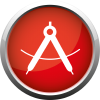Author
 Nigel Grant
Nigel has been working at EPLAN UK for almost 3 years as an Applications Engineer. His main tasks include installing the EPLAN software, giving live demos to prospects and customers and training customers on best practices for using the software. He has previously worked as an Electrical Engineer and a Project Engineer, both of which have driven his passion for helping companies become more efficient and driving their engineering to the next level. Nigel's experience in panel wiring, electrical engineering and project work has given him a well-rounded view of the industry. This enables him to offer customers the best solutions for their processes.
grant.n@eplan.co.uk
Nigel Grant
Nigel has been working at EPLAN UK for almost 3 years as an Applications Engineer. His main tasks include installing the EPLAN software, giving live demos to prospects and customers and training customers on best practices for using the software. He has previously worked as an Electrical Engineer and a Project Engineer, both of which have driven his passion for helping companies become more efficient and driving their engineering to the next level. Nigel's experience in panel wiring, electrical engineering and project work has given him a well-rounded view of the industry. This enables him to offer customers the best solutions for their processes.
grant.n@eplan.co.uk
Structural and Intelligent Engineering
As the manager of the engineering department in your company, you have the challenge of consistently structuring the terminology for all disciplines, including products, machines and installations.
At EPLAN, I have the privilege of supporting many different organisations when they optimise their engineering. In the last decade at EPLAN, we have gained a wealth of knowledge and would like to share this knowledge with you. We’ve combined all of the experience and feedback from companies all over the world into the EPLAN Experience.
8 Fields of Action
What leads to more efficiency and flexibility? We have identified eight fields of action based on the experience of thousands of engineering departments. These fields of action form the heart of EPLAN Experience.
- IT Infrastructure
- Platform Setup
- Codes & Standards
- Product Structure
- Design Methods
- Workflow
- Process Integration
- Project Management
I want to dig deeper into two fields of action that will be profitable to you:
- Codes & Standards
- Design Methods
Codes & Standards
There are countless, often legally binding standards and guidelines for the documentation and production of your products. The challenge is to integrate these into your systems, design methods and processes.
You can also go further than applying the guidelines by making your own arrangements. For example, the structuring of products into reusable modules and the definitions. By making your own arrangements, engineers from different disciplines are speaking the same language. The standard IEC 81346 lays a clear foundation for a structuring like this.
This structuring is not legally binding, but you can’t engineer efficiently without it. Why not? Firstly, because there is simply not enough time to engineer every project from scratch. Secondly, because a lot of engineering knowledge is only in the heads of your engineers. By storing this knowledge, there is more room for new developments.
And finally, to meet the ever tighter deadlines, the engineering disciplines work parallel instead of after each other. This means that engineers from different disciplines communicate more with each other, with a reduced chance of mistakes.
Using Codes & Standards, time is saved by agreeing on the definitions and structuring of products in part modules beforehand, which are then stored in a standard.
Design Methods 
Standardisation only leads to more efficiency when the design methods are connected to it. How can you significantly reduce the engineering work and the time it takes to plan a project? What is the most efficient way to design? By storing multidisciplinary settings for definitions and structuring in advance, you clarify a large part of the design. For the planning, this means that the different disciplines can work simultaneously on a project without a lot of extra communication. Your engineers are finished earlier and the chance of mistakes is reduced.
Globally, there are two ways that you can go:
1. Automating
Highly suited for generating electrical schematics for standard machines or installations with options and variants. The modules or macros can be larger because the products often have many options.
2. Configuring (configure to order)
Compose machines or installations with a configuration tool. Extremely well suited to generating projects with different functions, options and variants, complex dependencies and/or for several disciplines. The macros should be smaller to facilitate their reuse because every project is different.
What is the best for your engineering project: automation or configuration?
After standardising, it seems logical to automate the design process first and ‘configure to order’ after, if it is needed. However, in my eyes, it’s not a question of ‘first automate and then configure’ but a strategical choice between both of them. Therefore, it’s good to know why the customer has chosen your company and what you’re good at, before then choosing which design method best aligns with what you need. At this point, you can determine whether you opt for automation, configuration or a combination of both approaches. This may be different in each case because every customer has different requirements.




Comments